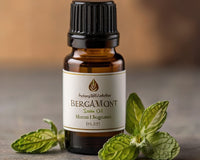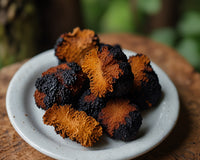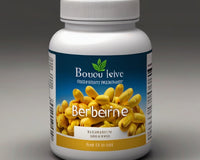White mineral oil is a highly refined mineral oil composed of saturated aliphatic and cycloaliphatic non-polar hydrocarbons. They are odorless, tasteless, colorless, hydrophobic and do not change color over time. The oil is biologically and chemically stable and does not support the growth of pathogenic bacteria, making it the standard oil of choice in most industries.
application
White mineral oils are best used as a base oil for blending in pharmaceuticals and personal care products, but it's their inert nature that makes them so beneficial. In most formulations, these oils protect against moisture, extend, soften, smooth and lubricate. You can easily find NF grade and USP grade white mineral oil in most products, usually antibiotics, tissues, sunscreen, lotions, and baby oil. The plastics industry also uses white mineral oils, typically in polymers, thermoplastic elastomers, polyolefins, and polystyrene. This is done to control and increase the melt flow rate of the finished polymer to release properties or change its physical properties. Food grade white mineral oil is used in pan oils and dough dispensers to suppress dust in grain silos and as a lubricant in food handling equipment to control foam in vinegar production, beet sugar, and improve leather tanning. process as well as lubricants in food wrappers to keep food crispy in the package.
history
White mineral oil was first used in the 1870s when Chesebrough Brooklyin discovered that it was very effective in treating injuries he had sustained. It then spiraled from there and is often used in the cosmetic, food and pharmaceutical industries. White mineral oil has been used for many years in petroleum products as well as in the cosmetic and pharmaceutical industries. The first known white mineral oils were discovered in Azerbaijan when they were pumped from wells and traded among caravansaries in the 11th century. Famous traveler Marco Polo discovered it in the 13th century and even mentioned it in literature - the use of petroleum in pharmaceuticals and medicine. Modern petroleum jelly has become an important raw material for skin care products. Chesebrough Brooklyn was the first to discover that a sticky transparent material he found in oil wells was very effective in treating skin injuries. He began producing and selling petroleum jelly, the first use of petroleum jelly, which is still commonly used in different skin care and cosmetic products today. Most people don't know that oil has many more uses than just being used as fuel for cars and machines. It is widely used in the manufacture of chemical raw materials, cosmetics, and health care products, directly affecting human health. Petroleum also provides us with white mineral oil, which is one of the most frequently used and consumed oils in people's daily lives around the world.
What is white mineral oil?
White mineral oil is an odorless, transparent, colorless, non-fluorescent oily hydrocarbon mixture, including saturated hydrocarbons from light-end distillation. They are used in different ways, including refining crude oil. Hydrogenation methods are also used in distillation, a process used to remove sulfur compounds, unsaturated hydrocarbons, aromatic amines and aromatic compounds from oils. The best thing about mineral oil is that it is not soluble in alcohol or solvents. Water, but soluble in organic solvents such as benzene and chloroform. It is called white mineral oil because of its transparent and colorless structure, also known as liquid paraffin or paraffin. Depending on its chemical composition, the oil is also labeled as pharmaceutical grade or technical grade.
Indispensable material in cosmetics and pharmaceutical industries
White mineral oil is used in many industries, including the plastics, food, pharmaceutical and cosmetic industries. In the cosmetics industry, the oil is used only as a secondary or primary material in the manufacture of bath oils, hair removers, makeup removers, makeup products, sunscreens, tanning products, baby oils, lotion formulas and creams. In the pharmaceutical industry, the oil is used in the manufacture of gelatin capsules, ointment and hair oil formulations, and laxatives. In the veterinary pharmaceutical industry, the oil is used in the manufacture of animal vaccines. White mineral oil used in medicines and cosmetics industries cannot contain any harmful substances that may harm human health and must be pharmaceutical grade. The raw materials added to the product should comply with international and national cosmetics regulations, as well as USP/NF, PH and other drug regulations. Europe because the product is applied directly or indirectly to the body. White mineral oil does not stay in the body for long because it does not contain any chemical groups and therefore is naturally excreted from the body.
It is widely used in the food industry
White mineral oil is commonly used in the food industry and is favored in some food processing, particularly in the manufacture of lubricants used by beverage and food manufacturers. Lubricants used in food manufacturing plants may come into contact with compressor oil, gear oil, hydraulic system oil, grease and food. This is why white mineral oils are preferred as they minimize serious health risks. All products containing white mineral oil are strictly monitored and must obtain the necessary certificates and meet relevant conditions. White mineral oil is also used extensively in the elastomers and plastics industry as it is used in the production of thermoplastic rubber, polystyrene and polyvinyl chloride. In addition, white mineral oil plays an important role in common products such as toys, glues, lamp oils, cleaning products, wood products, polishes and glazing products. As human needs continue to grow and technology advances, the range of products using white mineral oil is expected to increase in the future. There is no denying that white mineral oil is one of the most commonly used and consumed oils by people. Earth, its popularity and uses will only increase in the future. It's everywhere from children's toys to sunscreen, and it's bound to be in everything you use and consume in your daily life.
Food grade mineral oil
White mineral oil is part of daily life around the world and is commonly used in rust inhibitors, laxatives, skin care products, cosmetics and other products. However, concerns and caution about white mineral oil are strongest in the food industry. Most people are still unsure whether white mineral oil should be used in the food industry and whether it is safe for consumption. People are also skeptical about the potential health risks it may pose, which is why we’re taking a closer look at food-grade white mineral oil:
What can mineral oil be used for?
Low-grade white mineral oils are toxic, and the best way is to look at the different grades and viscosities of these mineral oils. This depends on their use, which varies among industrial, electrical, mechanical, cosmetic and biomedical uses. Medical grade white mineral oil can be safely used as a lubricating laxative and has been used to relieve constipation in people. They work well for treating chronic constipation, but potential side effects should also be considered. Industrial grade white mineral oil is commonly used in the electric power, petrochemical, chemical fiber, textile and agricultural industries. They are used as machine lubricants. Cosmetic-grade white mineral oil is used as a makeup remover or in skin care products and cosmetics such as ointments, creams, or lotions to promote healthy skin.
Application of food grade mineral oil
Food grade white mineral oil has many different applications, which we will look into in more depth.
1. Food processing applications
Food grade white mineral oil has the E number E905a and is commonly used in food handling applications. The reason is because their characteristics and properties are odorless and tasteless, thus preventing water absorption. Therefore, they can be used as preservatives on kitchen utensils and wooden cutting boards to block food odors and absorption of food liquids. They are also commonly used to lubricate food handling equipment, polish stainless steel surfaces, and clean and maintain knives after contact with food.
2. Food additives
Food grade white mineral oil is also commonly used in the food industry. This is because they have useful properties that make them excellent food additives. They are commonly used as anti-sticking agents to prevent candies from sticking to each other, lubricants in food processing, mold release agents and defoaming agents.
Is food grade mineral oil safe to use?
No reports have been discovered, released, or published that publicly confirm or state that food grade white mineral oil is unsafe for human consumption. Low-grade mineral oils are considered toxic, but food-grade mineral oils are highly refined and safe for use in the food industry. However, there is not much information about the potential side effects of white mineral oil on human health, which is why authorities say it should be used in moderation and taken with food. The World Health Organization even stated that the safest dose is 20mg/kgBW, while the European Food Safety Authority (EFSA) has set a more conservative safe dose of 12mg/kgBW. This clearly shows that white mineral oil does not pose a significant threat to health if you keep your daily intake below 720 mg. This clearly answers the question of whether food grade white mineral oil is safe for humans. They are frequently used as food additives in the food industry, so their use should not cause any concerns.
The difference between food grade and food grade pharmaceutical grade mineral oil
There is a difference between food grade and pharmaceutical grade white mineral oil and it all depends on the processing and refining process of the oil. Different compounds are involved, which means there will be a mixture of different grades and weights of hydrocarbons. White mineral oil is also further distilled to remove contaminants such as vanadium, lead, sulfur and complex hydrocarbons such as benzene to create cosmetic, pharmaceutical and food grade white mineral oil. The final form of white mineral oil will be an opaque waxy, colorless and odorless liquid. Their common names in the market are wax, petroleum jelly, white oil, liquid paraffin, and paraffin. White mineral oil has many different applications in diverse industries such as machinery lubrication, wood conditioning, scientific research, food manufacturing, cosmetics and pharmaceuticals.
United States Pharmacopeia
Pharmaceutical grade white mineral oil in the United States must meet the standards set by the United States Pharmacopeia (USP) standards agency. All manufacturers must ensure that they adopt the USP and National Formulary (NF) standards established for the production of USP pharmaceutical grade drugs and chemicals. The USP states that all drugs must be thoroughly tested to ensure compliance with all regulations. Food grade white mineral oil also requires USP certification, but this does not apply to all types of food grade white mineral oil.
FDA Drug Regulation
Pharmaceutical grade white mineral oil is classified as a drug under U.S. Food and Drug Administration (FDA) regulations. The FDA's applicable rules cover the formulation, manufacture, and packaging of white mineral oils in the United States. If a white mineral oil manufacturer states that their product meets USP standards, they will be required to follow the latest Good Manufacturing Practices (cGMP) manufacturing processes. This is a system designed to measure quality control in the pharmaceutical industry and is designed to ensure that all products are properly tested for potency and purity before being released to the market.
FDA food regulations
FDA food regulations also state that food-grade white mineral oil must be approved if used in food and beverages. The product may not be added to any food in an amount exceeding 10 parts per million. The Dietary Supplement Health and Education Act of 1994 requires food-grade products containing white minerals to be "safe" for consumption. Ensuring product safety is the responsibility of the manufacturer, not the FDA.














